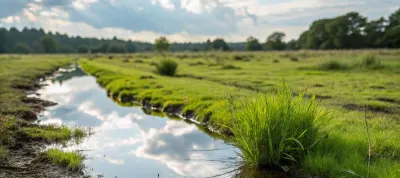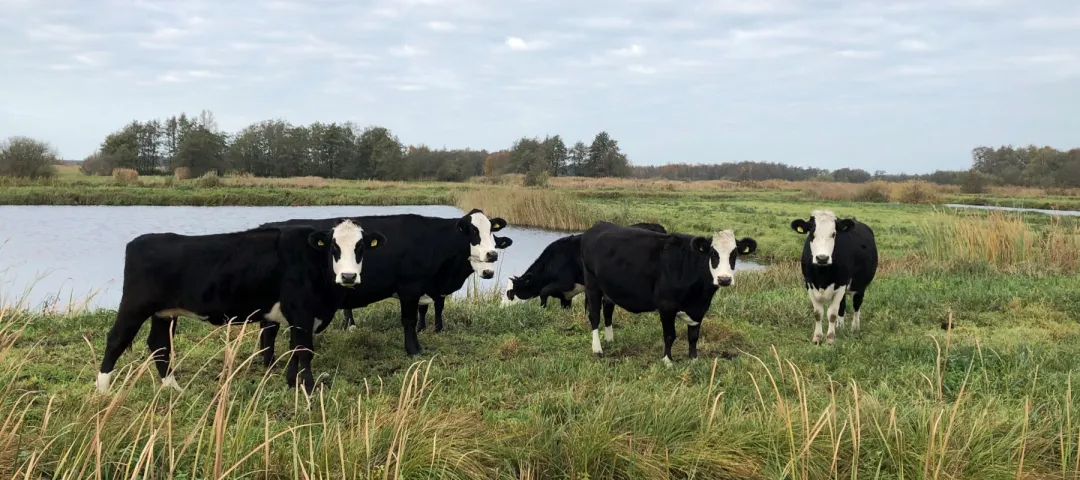General information
Beneficiary type
- Public authority / body
CAP specific objective
- SO4. Agriculture and climate mitigation
- SO5. Efficient soil management
- SO6. Biodiversity and farmed landscapes
Intervention type
- Art. 77 – COOP
Summary
The Dutch CAP Strategic Plan supports cooperation between dairy farmers to manage peat meadow areas and Natura 2000 transition areas. This measure funds the setting up of partnerships between farmers to create and implement area management plans.
The aims of this intervention are to reduce ammonia emissions through the extensification of dairy farms close to nitrogen-sensitive Natura 2000 areas and to reduce CO2 emissions by raising the groundwater level in the peat meadow areas.
Results
- In 2024, across all categories, a total of 45 applications were received, of which 26 were funded, covering 27 000 hectares (ha).

Funding
Total budget per category:
Category 1: 1.2 m (EUR)
Category 2: 55.4 m (EUR)
Category 3: 160 m (EUR)
Ressources
Documents
Liens
Context
The Dutch CAP Strategic Plan includes a cooperation measure (CSP I.77.7) that supports different types of piloting initiatives on dairy farms, including the management of peat meadow areas and Natura 2000 transition areas.
The intervention (application window is now closed) funds the setting up of partnerships between farmers and creating and implementing an area management plan.
Objectives
The objectives of this intervention are to achieve one or both of these goals:
- Reduce ammonia emissions through the extensification of dairy farms close to nitrogen-sensitive Natura 2000 areas.
- Reduce CO2 emissions by raising the groundwater level in peat meadow areas.
Activities
Farmers can apply for a subsidy in one of the three following categories:
- Reducing ammonia emissions in a nitrogen-sensitive Natura 2000 area or reducing CO2 emissions in a peat meadow area.
- Increasing the groundwater level in a peat meadow area and/or keeping dairy cattle less intensively.
- Managing dairy cattle less intensively to reduce nitrogen deposition in and around a nitrogen-sensitive Natura 2000 area.
Category 1 – Funding is available for setting up a new partnership and developing management plans, ensuring that at least 50% of the areas covered by the partnerships are located within a peat meadow area or Natura 2000 transition area. Activities financed include:
- networking and recruiting participants for the partnership;
- drawing up a new area plan, if necessary, drawing up a cooperation agreement (in the case of a new partnership);
- conducting studies, including feasibility studies; and
- project management/project administration.
Category 2 and 3 can receive support for:
- development of the project plan;
- creating, supervising, implementing and developing business plans;
- carrying out communication;
- reporting;
- purchasing and installing water infiltration systems;
- purchasing and installing digital groundwater monitoring wells; and
- implementing management measures such as raising the groundwater level and implementing management measures related to farm extensification.
Main results
In 2024, the number of applications received and contracted were:
- Category 1 – four applications were received, all funded, covering 1 179 ha.
- Category 2 (peat area) – Fourteen applications were received, of which nine were granted funding, covering 7 200 ha and involving 193 farmers, 30 of which are organic.
- Category 3 (the Natura 2000 area) – Twenty-seven applications were received, of which 13 were granted funding, covering 18 626 ha, involving 168 farmers, of which 91 are organic.
Key lessons
- During the implementation of the scheme, there is a risk of interference with other area-based interventions, resulting in competition and a risk of double funding.
